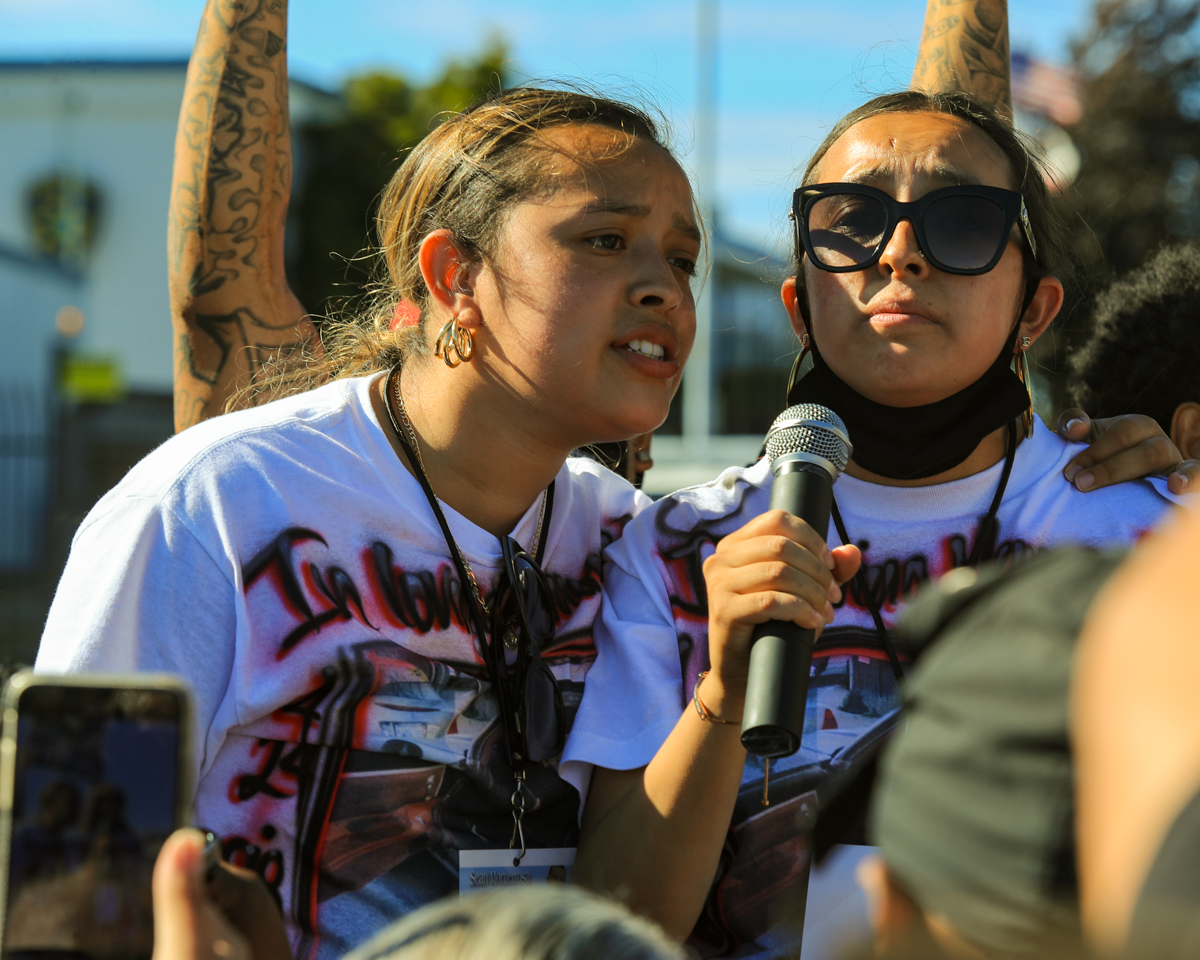

Signed settlement agreement mandates Vallejo Police Department implement reforms contained in October 2023 stipulated judgment, which remained unsigned by court for more than 6 months
Special to the Vanguard
Vallejo, CA – Rob Bonta, California Attorney General, announced on Thursday that the Cal DOJ has secured a settlement agreement with the city of Vallejo and the Vallejo Police Department requiring reforms to VPD’s policies and practices.
The settlement contains nearly identical terms to the stipulated judgment that DOJ and VPD submitted to the court on October 15, 2023, that had remained unsigned by the court and therefore unenforceable until approved by the court.
The agreement addresses allegations that the Vallejo Police had “engaged in a pattern or practice of unconstitutional conduct.”
The city of Vallejo along with the police will now undertake a comprehensive set of actions, led by Independent Evaluator, Jensen Hughes, and overseen directly by the DOJ—to promote public safety, reduce unlawful uses of force, eliminate racial and identity disparities, strengthen accountability systems, continue to increase support for officers, and protect the statutory and constitutional rights of the people of Vallejo.
“Repairing trust between our law enforcement and the communities they serve is a foundational part of public safety and rebuilding that trust takes swift, decisive action,” said Attorney General Bonta.
“The settlement agreement with the city of Vallejo and its police department demonstrates commitment to correcting injustices, building trust, and enhancing public safety  for the people of Vallejo, by allowing the reforms decided upon in our October 2023 stipulated judgment to move forward immediately, irrespective of court approval,” the AG said.
for the people of Vallejo, by allowing the reforms decided upon in our October 2023 stipulated judgment to move forward immediately, irrespective of court approval,” the AG said.
He added, “We cannot afford to be complacent. The reforms laid out in the agreement are needed and necessary to continue healing the relationship between law enforcement and the community, and they are needed now. It’s past time the people of Vallejo have a police department that listens and guarantees that their civil rights are protected. My office is committed to protecting the rights of the people of Vallejo by overseeing and enforcing the agreement, and working collaboratively with VPD and the city and ensuring a fair, thorough, and transparent process.”
On June 5, 2020, DOJ, the city of Vallejo, and VPD entered into a MOU for VPD to institute a comprehensive modernized policing plan that included implementing 45 reform recommendations made by expert consultants, as well as additional review from DOJ to expand upon and add any additional recommendations needed to modernize VPD’s current policies and practices, assist with implementation of the recommendations, and independently evaluate VPD’s compliance with the recommendations. DOJ’s decision to enter into an MOU with VPD to reform its policing came in light of several high-profile uses of force, including a number of officer-involved shootings.
When the MOU expired on June 5, 2023, VPD had achieved substantial compliance with 20 out of the 45 agreed-upon recommendations. During the review of VPD’s systems and practices under the MOU, DOJ concluded that VPD failed to uniformly and adequately enforce the law, based in part, because of defective or inadequate policies, practices, and procedures. Under the terms of the settlement, VPD and the city of Vallejo are required to implement the remaining reforms, and to implement additional reforms addressing civilian complaints, bias-free policing, stops, searches, seizures and arrest, and ongoing oversight of these reforms.
In October 2023, the parties agreed on a comprehensive five-year plan to address the numerous areas that need improvement and modernization to bring VPD into alignment with contemporary best practices and ensure constitutional policing. However, the stipulated judgment had remained unsigned by the court and was therefore unenforceable. Committed to swift action, on April 8, 2024, the parties executed a settlement agreement to replace the unsigned stipulated judgment and immediately moved to institute the reforms contained in the October 2023 stipulated judgment.
Importantly, the settlement provides for DOJ to oversee and enforce the terms of the settlement and remains in effect until the terms are met. DOJ retains the right to enforce the agreement by bringing legal action in Alameda Superior Court should the terms not be met.
Under the settlement, VPD will implement the remaining recommendations that have not been completed from the 45 Recommendations contained in the May 2020 report titled “Vallejo Police Department: Independent Assessment of Operations, Internal Review Systems and Agency Culture” (2020 Recommendations). Additionally, under the agreement VPD will implement additional recommendations, including to:
- Address unreasonable force by holding officers and supervisors accountable for not identifying, adequately investigating, or addressing force that is unreasonable or otherwise contrary to VPD policy; and refer uses of force that may violate law or VPD’s use of force policy to their Professional Standards Division (internal affairs) for further investigation or review.
- Enhance, promote, and strengthen partnerships within the community, to continue engaging constructively with the community to ensure collaborative problem-solving and bias-free policing, and to increase transparency and community confidence in VPD.
- Utilize its Chief’s Advisory Board (CAB) and the Police Oversight and Accountability Commission (POAC), to continue to develop and amend significant policies that impact the community, including to its use of force policies, community-policing strategy and policies, bias-free policing policies, and civilian complaint policies.
- Develop a policy that defines and limits the use of pretextual stops.
- Enhance and revise training with respect to investigatory stops, reiterating that race, color, ethnicity, national origin, religion, gender, gender identity, disability, or sexual orientation are not to be used as a factor in establishing reasonable suspicion or probable cause, except as part of actual and credible descriptions of a specific suspect.
- Prohibit officers from conducting consent searches during consensual encounters. Officers may not conduct a consent search after detaining a subject unless an officer reasonably suspects that the subject has contraband or evidence related to that detention, and the consent must be documented on body camera footage or a signed consent form.
- Ensure stops, searches, and seizures comply with the law, as part of an effective overall crime prevention strategy that does not contribute to counterproductive tension with the community.
- Commit to providing bias-free services and enforcing laws in a way that is professional, nondiscriminatory, fair, and equitable.
- Work with the independent Evaluator Jensen Hughes and DOJ to develop a policy and protocol for responding to calls involving a person in mental health crisis or suffering from a mental health disability. The policy and protocol will include utilizing professional civilian staff, who are trained professionals in responding to mental health crises, to respond when appropriate and available.
- Develop and implement policies, guidelines, and training to ensure all supervisors and managers:
- Exercise appropriate supervisory oversight.
- Conduct objective and impartial investigations.
- Are held accountable for meeting agency standards and expectations.
- Engage with and listen to community feedback.
- Incorporate community feedback when able and appropriate.
- Develop and evaluate policing strategies and tactics reflective of contemporary best community policing practices.
- Conduct an ongoing audit of incidents where an officer points a firearm at a member of the public or brandishes a firearm in the presence of a member of the public to ensure that its officers are not drawing a firearm solely based on the mere existence of a potential risk (e.g., public contact, pedestrian/traffic stop).





